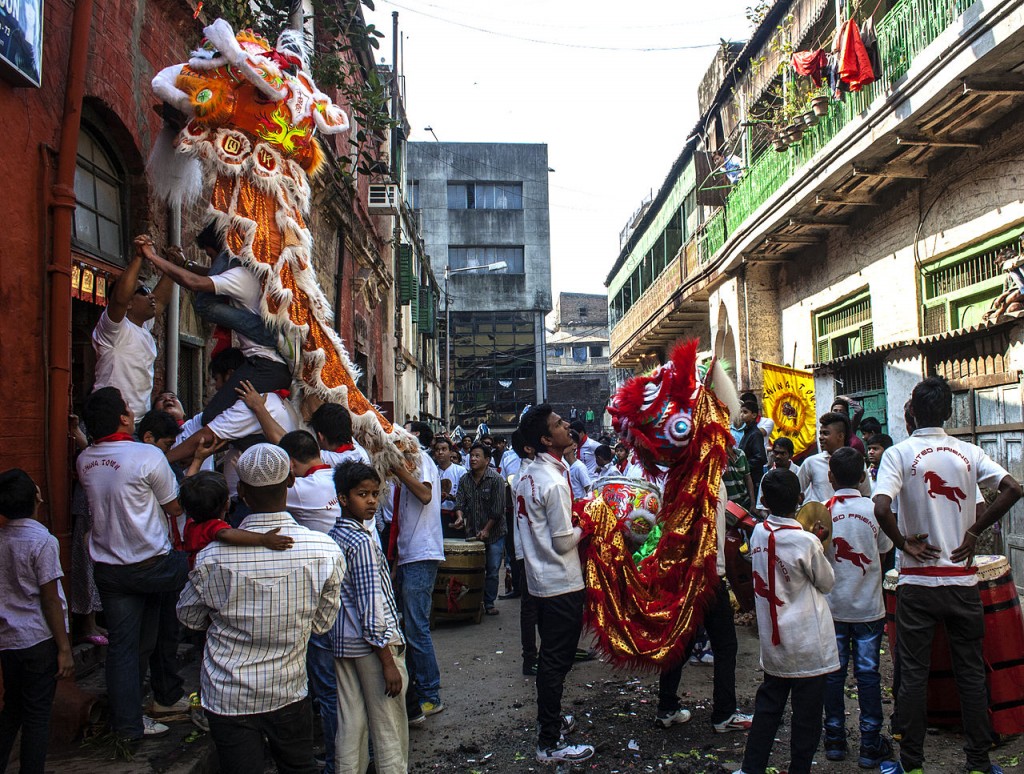
NEW DELHI — When he met with Indian Prime Minister Narendra Modi last September, Chinese President Xi Jinping promised China would invest $20 billion in India over the next five years. But while the flow of money from China has begun to pick up, there are also less encouraging signs about the state of Sino-India economic ties.
There are only two Chinatowns in India, both in the eastern city of Kolkata, and both are on the wane.
The old Chinatown is located in the city center, while the new one is situated in its southern Tangra district. It was in the latter that I met John Lee, who was running a restaurant there, five years ago.
“We have 2,000 Chinese living here now,” Lee told me. “There used to be as many as 30,000, and between 250 and 300 leather factories. It was so bustling. My restaurant was also a factory before we turned it into a Chinese diner. The ceiling is very high, you see.”
He went on to describe the neighborhood’s changing fortunes: “My father moved here from China in 1926 and later started the factory. He launched a Chinese association and put out a Chinese newspaper. There were Chinese schools, too. But about 10 years ago, the Indian government suddenly ordered us not to run factories here. Since then, many of us have emigrated overseas. The last school was closed six months ago because there weren’t enough children.”
When I visited Tangra in early September, Lee’s restaurant, the Hot Wok Village, was still there, but he was not.
“Lee moved to Canada two years ago,” I heard from an Indian employee behind the register, the same place Lee used to stand.
Ups and downs
In the 1770s, Chinese merchants from Guangdong Province came to Kolkata and set up sugar plantations on land granted to them by the East India Company. The old Chinatown dates to around that time, making it one of the oldest among the world’s 170 Chinatowns.
Kolkata’s Chinese population ballooned in the early 1900s with the influx of workers who left China in the confusion that followed the end of the Qing dynasty. Affluent Hakka immigrants acquired tanning factories that had been run by Italians but which were forced to close by then-British India during World War I. The new Chinatown sprang up around this group of leather factories.
According to local records, the number of people of Chinese decent living in Kolkata reached its peak of 100,000 sometime around 1940-45. But when a border dispute broke out between China and India in 1962, tens of thousands left the city. Some were deported by the Indian government, others decided themselves to leave. Around this same time, the small Chinatown in Mumbai completely disappeared.
Reason to hope?
Today, there are only 3,000 to 5,000 Chinese locals in Kolkata.
Ho Chi Hsiung, 55, was playing chess at the Sea Ip Church, a landmark dating back to 1905, in the old Chinatown. “There is no future here for us,” he said.
His father, a carpenter, came to India from Guangdong Province in 1916. Chi Hsiung was born in Kolkata and later owned a Chinese restaurant there. Already struggling with a decline in customers, the shop took a further hit from the spread of avian flu. Ho finally closed the eatery three years ago. Two of his four siblings have emigrated to Canada.
“Many Indians are losing their jobs,” he said. “How could we find work here?” He placed his hands together and bowed to a statue of Kwang Kung, a Chinese god of wealth, housed in the church.
Could greater Chinese investment in India revitalize the district?
China’s cumulative investment in India as of June had almost tripled in 14 months to nearly $1.2 billion. The increase over the past year has been marked, but it is not enough to put Xi’s promise of $20 billion over five years within reach.
India is keen to reduce its growing trade deficit with China by, among other things, developing its domestic manufacturing industry. To do so, attracting Chinese businesses will be essential. China, for its part, is encouraging its companies to explore overseas opportunities as a way of dealing with the cooling market at home. Chinese businesses are expected to continue investing in India, particularly in infrastructure, telecommunications and electronics.
Ho says he has no doubts that Chinatown could provide a comfortable base for Chinese companies looking to enter India.
Kolkata is home to several thousands of India-born Chinese, who are fluent in Hindi or Bengali, as well as Cantonese and the Hakka language. Ho also says the presence of restaurants offering “real” Chinese dishes would be a plus for Chinese workers posted to India.
The Indian and Chinese governments have not shown any overt interest in the district, but Singaporean businesses and people of Chinese descent have joined with the Kolkata city government to revitalize the area. The Cha Project was launched to restore streetscapes and buildings, including Toong On Church, the oldest in the district, and to redevelop the dining district.
Greater trade and investment between the two countries would give Kolkata’s Chinatown a much needed second wind. Stronger economic ties would also go a long way toward soothing bilateral relations that remain strained by territorial disputes, both on land and at sea.